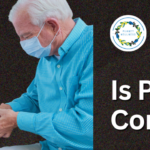What Are The First Signs Of Diabetes?
When you set out to explore the complex world of Diabetes, you must first learn how to recognize the subtle signs that frequently indicate the disease’s early onset. Diabetes is a complex disease with a wide range of symptoms that are the first indications of the illness. The range is wide, encompassing increased thirst and frequent urination to less obvious symptoms including fatigue and slow-healing wounds. Examining these first signs in greater detail not only increases awareness but also emphasises how important it is to recognize problems early and take preventative action with your health.
Frequent Urination
Polyuria, the medical term for frequent urination, is a strong early indicator of diabetes that should not be disregarded. This symptom, which suggests possible problems with insulin function, is the body’s effort to remove excess glucose through urine.
Polyuria and Diabetes
When combined with other symptoms like increased thirst and unexplained weight loss, frequent urination is frequently a sign of diabetes early on.
Excess Glucose in the Blood
Diabetes makes it difficult for the body to control blood sugar levels. Increased urination is a result of the kidneys having to work harder to filter and eliminate excess glucose through urine when blood glucose levels are high.
Dehydration and Thirst
Frequent urination can lead to dehydration, which intensifies the feeling of thirst. Diabetes is known for its characteristic hallmark of increased thirst and urination.
Early Intervention is Crucial
It’s critical to identify frequent urination as a possible indicator of diabetes in order to start treatment early. Complications from uncontrolled diabetes can be avoided with prompt diagnosis and treatment.
Watch and learn more about the Symptoms of Diabetes by watching our video.
Increased Thirst
Polydipsia, or increased thirst, is a critical early indicator of diabetes that needs to be addressed. This is a symptom that is closely related to high blood sugar and the body’s reaction to being dehydrated.
Polydipsia and Diabetes
A common early sign of diabetes is excessive thirst, especially when it’s coupled with other symptoms like frequent urination and unexplained weight loss.
High Blood Sugar and Dehydration
Increased blood glucose levels result from diabetes’s inability to control blood sugar levels. In response, the body tries to get rid of the extra sugar through urine, which dehydrates the body and makes you thirsty all the time.
Recognizing the Sign Early
For an early diagnosis and successful treatment of diabetes, it is essential to recognize increased thirst as a potential sign of the disease. It acts as a signal that the body is having trouble controlling its glucose levels.
Have you tried everything to help control your diabetes and lead a better quality of life?
Do you sometimes wonder, how other people who have diabetes, are able to live a much more fulfilled life? Then our FREE Best Ways to Treat Diabetes Guide is must for you to learn the best proven ways to treat your diabetes.
Importance of Timely Intervention
Preventing consequences from diabetes requires addressing its early symptoms, such as increased thirst. Early intervention, including changes in diet and lifestyle, can aid in the condition’s effective management.
If you are seeking natural solutions to your health concerns, willing to try new things, and willing to put in some effort into getting healthier, watch our video where we speak on the topic Practical Ways to Treat and Prevent Diabetes Naturally.
Unexplained Weight Loss
Unexpected weight loss is a subtle but important sign of diabetes that is frequently missed. Recognizing this early indicator can help with prompt action and improved management of the condition.
Metabolic Changes in Diabetes
When diabetes interferes with the body’s ability to utilise glucose, it turns to burning muscle and fat for energy. This change in metabolism may cause inexplicable weight loss.
Importance of Recognizing Early Signs
Unexpected weight loss should raise suspicions, particularly if it is accompanied by additional symptoms like increased thirst and frequent urination. Early detection of these symptoms is essential for a timely diagnosis and efficient diabetic care.
Connection to Blood Sugar Levels
Diabetes-related blood sugar fluctuations play a role in the breakdown of muscle and stored fat, which results in weight loss.
Addressing the Underlying Issue
Weight loss should be interpreted as a possible indicator of an underlying medical condition rather than as a standalone symptom, leading people to seek medical assistance and complete the required testing for Diabetes.
Educating the Public
Creating a proactive attitude toward health requires raising awareness of the connection between diabetes and unexplained weight loss. People with more knowledge may be more empowered to seek assistance from healthcare professionals and identify symptoms early.
Fatigue
Fatigue, which is frequently overlooked, may be an indicator of diabetes. It’s essential to understand this subtle symptom in order to identify the illness early and treat it effectively.
Metabolic Changes and Energy Drain
Diabetes affects how well the body uses glucose, which has an impact on energy levels. As a result of the body’s difficulty obtaining energy from glucose, persistent fatigue occurs.
Fluctuating Blood Sugar Levels
Diabetes causes energy spikes and crashes due to unstable blood sugar levels. These variations affect everyday activities and general well-being by adding to feelings of fatigue.
Associated Symptoms
Other diabetic symptoms including increased thirst, frequent urination, and unexplained weight loss are also present alongside fatigue. Identification of the combination of these symptoms is essential for prompt diagnosis.
Importance of Seeking Medical Advice
Never disregard persistent fatigue, especially if it interferes with day-to-day activities. For an accurate diagnosis, a complete evaluation performed by a healthcare professional is necessary.
Lifestyle Changes and Management
When treating fatigue in the setting of diabetes, lifestyle adjustments such as dietary changes and regular exercise are necessary. Timely intervention can aid in avoiding complications linked to uncontrolled diabetes.
Learn about How to use Iridology to spot Diabetes by watching our insightful video.
Blurry Vision
Although it’s frequently written off as a typical problem, blurry vision can be a serious early indicator of diabetes. It is essential to understand this visual symptom in order to detect it early and take appropriate action.
Impact on the Eyes
Diabetes can cause changes in the shape of the eyes’ lenses, which can result in impaired vision. This happens as a result of blood sugar fluctuations impacting the fluid balance in the eyes.
Diabetic Retinopathy
A diabetic-related condition that affects the blood vessels in the retina, known as Diabetic Retinopathy, may be the cause of blurry vision. It is critical to identify this symptom since, if untreated, diabetic retinopathy can result in permanent visual impairment.
Swelling of the Lens
Vision is impacted by high blood sugar because it swells the lens of the eye. Treating high blood sugar is essential to managing and preventing visual problems associated with diabetes.
Seeking Professional Help
It’s important to take persistent blurry vision seriously. Those who experience this symptom, particularly when combined with other signs of diabetes such as increased thirst and frequent urination, should get in touch with a healthcare professional at once for a thorough assessment.
Routine Eye Exams
Regular eye examinations are essential for early detection of diabetes-related vision problems. Diabetes complications can be considerably reduced by identifying and treating the condition early on.
Slow Healing of Wounds
Slow wound healing could be a critical but often overlooked sign of diabetes. It is crucial to understand the relationship between diabetes and delayed wound healing in order to detect the condition early and take preventative measures.
Impaired Blood Circulation
Diabetes frequently results in poor blood circulation, which makes it more difficult for the injured area to receive vital nutrients and immune cells. This deficiency plays a role in delayed healing.
Weakened Immune Responses
Diabetes-related elevated blood sugar levels have been shown to compromise the immune system. Effective wound healing depends on a strong immune response, and a compromised immune system can result in longer recovery times.
Neuropathy Challenges
One typical complication is Diabetic Neuropathy, which impairs sensation and nerves. Diminished feeling in the impacted region may result in injuries that go undetected, and the body’s delayed response prolongs the healing process of wounds.
Infection Risks
The trifecta of impaired blood flow, reduced immunity, and neuropathy renders diabetics more susceptible to infection. A cycle of delayed recovery is created when infections obstruct the healing process even more.
Early Intervention Importance
Recognizing slow wound healing as an early indicator of diabetes emphasises the significance of early intervention. Not only can prompt diagnosis and treatment facilitate quicker wound healing, but they also improve overall diabetes control.
Gain insights about Natural Remedies for Diabetic Wounds by watching our informative video.
Conclusion
As the mystery around diabetes and its first signs is solved, it is clear that early detection is critical for preventive healthcare. Our bodies communicate in a variety of subtle ways, from the obvious signs of increased thirst and frequent urination to the unobtrusive ones like fatigue, blurred vision, and sluggish wound healing. Having an understanding of these early signs gives us the power to take control of our health. People may embark on a journey of early detection, timely intervention, and effective management by raising awareness and adopting a holistic approach to health. This will ensure a healthier and better-informed life when dealing with Diabetes.
To learn more about Diabetes, check out our other related blogs:
How To Treat Diabetes Using Iridology
Practical Ways To Treat And Prevent Diabetes Naturally
How Can I Check If I Have Diabetes
Check out and order our Amazon Number 1 Bestseller book
The Diabetes Solution : A 28 Day Action Plan For Lowering Blood Sugar Naturally.
NEXT STEP
Book in a complimentary 15 minutes Zoom call with us (valued at £99) to enable us to clarify questions you may have on a specific health concern.






